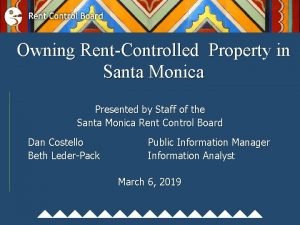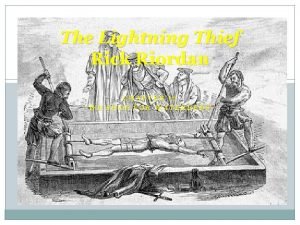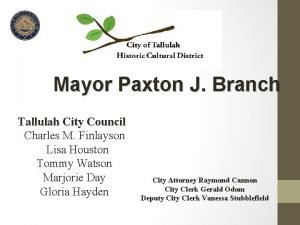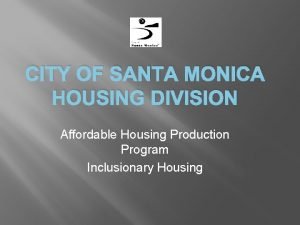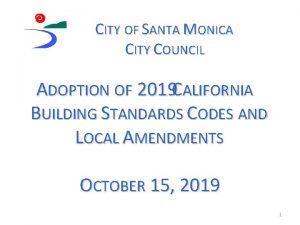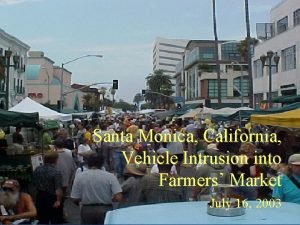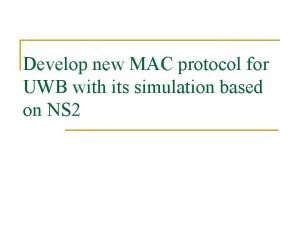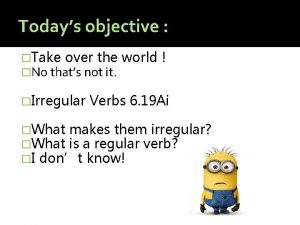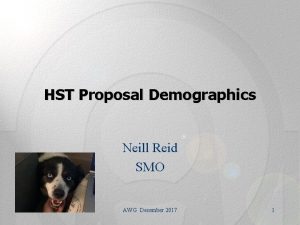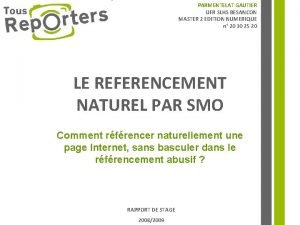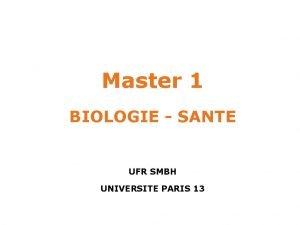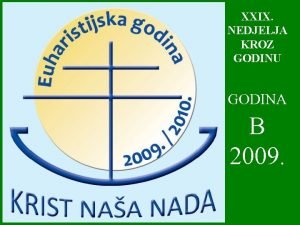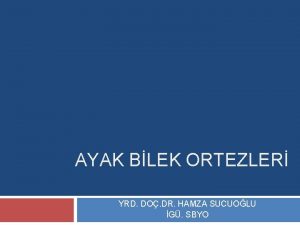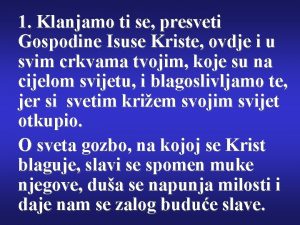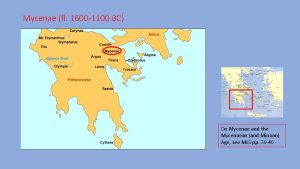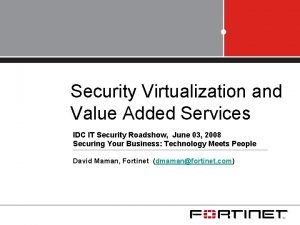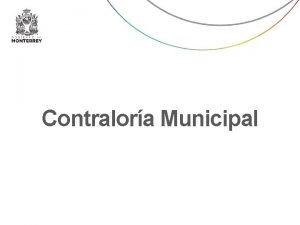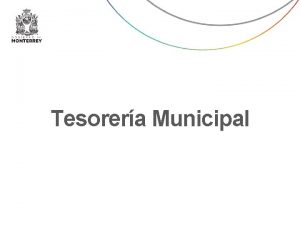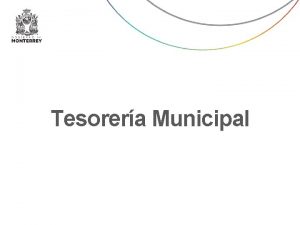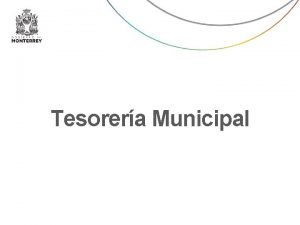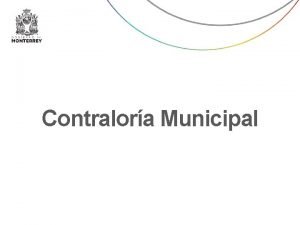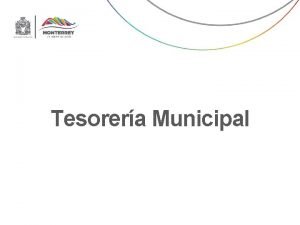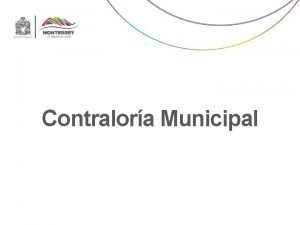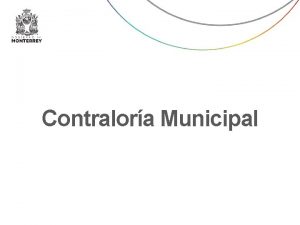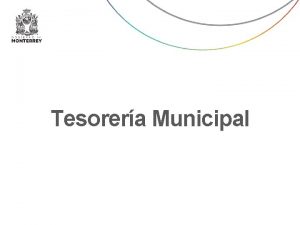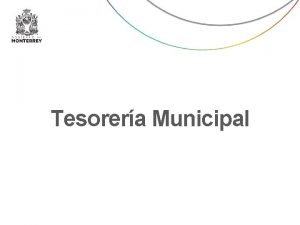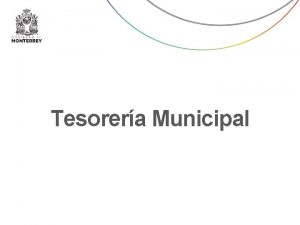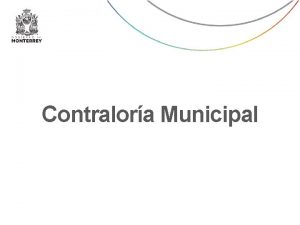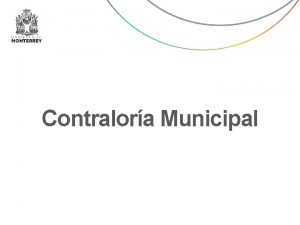The SMO Saga SMO thats Santa Monica Municipal











































- Slides: 43

The SMO Saga SMO, that’s Santa Monica Municipal Airport Dr. Sarah J. Nilsson, Esq. 1

Why Saga, you say? Because for more than 50 years this airport has been the focus of intense legal and political battles over its very existence. The SMO saga epitomizes the dilemma of maintaining the viability of municipal airports notwithstanding local interest in converting airport premises to nonaviation uses. 2

SMO’s proponents argue: (1) federal law supports its continued operation; (2) the nation’s safe and efficient air transportation infrastructure relies on its availability; and (3) It brings local economic benefits. The City and SMO’s opponents in the community argue: (1) SMO poses unacceptable noise; (2) pollution, and (3) ground safety risks in an urban and residential area. 3

1917: Born as a landing strip 1919: Became Clover Field and Douglas Aircraft Company began producing civilian and military aircraft there 1926: City first acquired the land that is now part of SMO 1927: City changed name of Clover Field to SMO 1927 – 1941: City acquired adjacent parcels 4

5

December 1941, the City entered into 2 leases Lease 1 “Runway lease” Lease 2 “Golf course lease” for 86 acres in the northerly part of the Airport, including the runways, for a term lasting until 12 months after the expiration of Proclamation 2487 for 83 acres to the south, for a term lasting until June 1943 with an option to extend on an annual basis to June 1947 6

Douglas Aircraft Company built planes for the war effort, including the Douglas XB-19, then the largest bomber built for the Army Air Corps. Given the City’s size and SMO’s use at that time, neighbors were comparatively few, but during the war the community’s population increased rapidly. 7

1944 and 1945 The City and the federal government executed supplements to the runway and golf course leases, respectively. The supplements provided for construction of a new runway, and the US agreed to convey such improvements to the City. The golf course lease term also was extended to 12 months after the termination of Proclamation 2487. 8

1945 The US acquired 20 acres of residential property to the west of SMO According to the City, this was accomplished by condemnation and purchased using City funds 9

1946 Under additional supplements to the leases, the federal government was relieved of its obligations to maintain SMO and pay rent, but did not surrender its leaseholds. The City agreed to operate SMO under a right of entry. 10

1948 The City and the US, through the former War Assets Administration and pursuant to the Surplus Property Act, entered into an instrument of transfer by which the US surrendered to the City its remaining SMO leaseholds, some easements, improvements, and personal property, subject to certain terms that were to run with the land. (1) the land, improvements, and other items transferred to the City were to be used for public airport purposes. (2) the City was not to use, lease, sell, salvage, or dispose of any transferred property for nonairport use without federal consent. The instrument of transfer was recorded as a quitclaim deed. 11

1949 The US also quitclaimed to the City its interest in the 20 acres it had purchased with City funds. 12

1952 President Harry S. Truman terminated Proclamation 2487. 13

1950 s General aviation grew at SMO, largely due to military pilots returning to the area after serving in World War II and the Korean conflict. In addition, commercial airlines were expanding, and pilot training at SMO reached an all-time high. Outside SMO, the City’s size and demographics shifted in the post-war decades from that of a small resort community to a higher-income suburb of Los Angeles. 14

1962 The City first considered closing SMO at a City Council hearing on January 10, 1962. In conjunction with that hearing, the City Attorney issued an important opinion letter stating that the 1948 instrument of transfer and certain federal contracts prevented the City from closing SMO. 15

Legal disputes over aircraft operations and noise, and then over local efforts to regulate them, began with Nestle v. City of Santa Monica, an inverse condemnation noise action brought by Airport neighbors followed by Stagg v. Municipal Court, which was an operator’s challenge to the City’s imposition of a nighttime curfew. Inverse condemnation is a term used in the law to describe a situation in which the government takes private property but fails to pay the compensation required by the 5 th Amendment of the Constitution, so the property's owner has to sue to obtain the required just compensation. 16

1970 and 1971 The City revisited the closure issue, but the FAA opposed closure, citing the US’ investment in SMO and its place in the national air transportation system. The FAA also noted the 1962 opinion letter, which advised that, under the instrument of transfer, the City must maintain SMO as an airport. 17

1974 The Airport Neighbors Forum, consisting of “representatives of local airport neighborhoods and interested in aviation, ” was formed to advocate for noise mitigation. 18

1975 In response to community complaints, the City Council (1)imposed a night curfew, (2) imposed a maximum single-event noise level of 100 d. B, and (3) banned certain low approaches on weekends, helicopter training, and all jet traffic, with fines for jet landings and takeoffs. 19

1975 Douglas Aircraft Company left SMO, to consolidate its operations at Long Beach Airport. 20

1980 s SMO Association and other SMO users and supporters challenged these restrictions on federal preemption grounds. The U. S. District Court for the Central District of California, however, rejected the plaintiffs’ preemption argument, ruling that because municipal control of airports was not totally preempted, reasonable, nondiscriminatory controls were valid. The first two impositions plus the bans on low weekend approaches and helicopter training did not violate federal grant agreement or lease terms, the Federal Aviation Act of 1958, or the equal protection and commerce clauses of the US Constitution. However, the court struck the jet ban and fine ordinances on the basis that they violated those constitutional clauses. 21

1980 s The closure effort gained momentum. The City conducted an economic impact study, which concluded that the municipality would generate more revenue from closing the airport for commercial redevelopment. 1981 The City Council adopted Resolution No. 6296, which provided for closing SMO as soon as legally possible. 22

1984 In an attempt to resolve the closure issue, the FAA and the City entered into the 1984 Agreement, which required operation of SMO until July 1, 2015, but did not specifically address its fate thereafter. The City Council, meanwhile, sought to ban Category C and D aircraft from SMO due to their size and speed. The FAA challenged that action, and the U. S. Court of Appeals for the District of Columbia Circuit struck down the City’s ban. The FAA did not act arbitrarily or capriciously in deciding that the ordinance violated the grant assurance against unjust economic discrimination 23

24

25

26

2013 In a complaint filed in the Central District of California, the City sought authority under the federal Quiet Title Act to reclaim control of SMO. 27

2013 The City argued that the FAA’s requirement that the City operate SMO in perpetuity constituted a constructive confiscation of the City’s property and a Fifth Amendment taking. It contended that the US never owned SMO so that the 1948 instrument of transfer and quitclaim deed were invalid, and that the related requirement to maintain the property as SMO prevented the City from exercising its sovereign power over SMO as well as its police power to protect the public and serve community needs. The City also argued that just compensation was not available to redress the harm it suffered and that the FAA’s requirement to operate SMO in perpetuity was a “commandeer[ing]” of City property in violation of the Tenth Amendment. Finally, the City claimed that the FAA’s position violated the City’s Fifth Amendment substantive due process rights. The FAA moved to dismiss, arguing primarily that the City’s action was time-barred under the applicable statute of limitations. 28

29

2013 The National Business Aviation Association (NBAA) and the Aircraft Owners and Pilots Association (AOPA) filed an amici curiae brief supporting the FAA’s dis- missal motion, citing SMO’s significance to their members in the congested Southern California airspace and to the national air transportation infrastructure. Amicus Curiae. Latin for "friend of the court. " Plural is "amici curiae. " Frequently, a person or group who is not a party to an action, but has a strong interest in the matter, will petition the court for permission to submit a brief in the action with the intent of influencing the court's decision. 30

2013 The district court dismissed the City’s complaint, ruling that the Quiet Title Act request was time-barred. The court reasoned that as early as 1948, when the instrument of transfer was executed, the City had notice of the federal government’s interest in SMO. The Quiet Title Act claim was dismissed with prejudice; the court dismissed the City’s remaining claims without prejudice. A dismissal with prejudice is dismissal of a case on merits after adjudication. The plaintiff is barred from bringing an action on the same claim. Dismissal with prejudice is a final judgment. A case dismissed without prejudice means the opposite. It's not dismissed forever. 31

2013 The City appealed. In an unpublished decision, the U. S. Court of Appeals for the Ninth Circuit reversed, holding that the district court erred in finding that the statute of limitations issue was not “inextricably intertwined” with the merits of the Quiet Title Act claim. The Ninth Circuit ruled that the district court should have held a fact-finding trial, and that it erred in finding that the instrument of transfer clouded title to the land for purposes of triggering the statute of limitations. The case was remanded for further proceedings. A cloud can be defined as: "Any document, claim, unreleased lien or encumbrance that might invalidate or impair the title to real property or make the title doubtful. Clouds on title are usually discovered during a title search. " 32

33

2013 While the litigation was pending, Santa Monica voters approved a measure providing that if SMO closed, the land could only be used for parks, open space, recreational, educational, and/or cultural purposes, absent a public vote. 34

2014 The City’s quiet title action and its reversal and remand began a new series of administrative and judicial actions over SMO’s closure. The NBAA, the AOPA, and airport tenants and users filed a “part 16 complaint” with the FAA against the City regarding the City’s position that under the 1984 Agreement its Airport Improvement Program (AIP) grant obligations ended after July 1, 2015. 14 C. F. R. pt. 16 35

When airports receive Federal grant funds or the transfer of Federal property for airport purposes, their owners or sponsors must accept certain obligations and conditions. These obligations may be incurred by contract (Grant Assurances) or by restrictive covenants in property deeds. Anyone concerned about an airport's compliance with these obligations may file informal or formal complaints with FAA. 36

37

2014 In response, the FAA issued a director’s determination that the City’s grant assurance obligations remained effective until August 27, 2023. The FAA’s final decision upheld that determination. 38

In another part 16 complaint, several Airport users, individuals, and business tenants alleged that the City was unlawfully “squeezing” rates and charges, imposing “burdensome operational and lease restrictions, ” and engaging in revenue diversion, all as part of its plan to close SMO. Atlantic Aviation, a fixed-base operator (FBO), alleged that its lease had expired June 30, 2015, without offer of a new lease. It contended that the City was seeking to take over FBO services and limit fuel sales and other services as part of a plan to close SMO in violation of the City’s federal obligations. Justice Aviation, a flight school and aircraft rental business, filed its own part 16 complaint, also alleging that its lease had expired June 30, 2015, and that the City was not offering or negotiating new leases with aeronautical tenants. Justice Aviation also filed a complaint in federal court, setting forth essentially the same allegations and claims. American Flyers, which operated a flight school and provided hangar and tie-down rentals and selffueling, challenged the City’s 30 -day notice to vacate as violating FAA grant assurances, which require airports to operate for the benefit of the public, without exclusive rights. American Flyers also alleged 39 that the City had violated the 1948 instrument of transfer.

With these complaints pending, the FAA and the City, on January 30, 2017, entered into the stipulation and order/consent decree and settlement agreement in the quiet title action. Its stated purpose was to “resolve any and all claims of the City arising from the events giving rise to the allegations described in the Complaint. . . and in certain other proceedings between the parties. ” The settlement agreement provided that the City would operate SMO until December 31, 2028, unless the parties agreed to an earlier closure date, and maintain the runway at 3, 500 feet (having planned to shorten it from 4, 973 feet in order to reduce jet traffic). The City “may exercise its proprietary exclusive right to provide aeronautical services, ” including fuel, and may request enhanced flight curfews from the FAA; it must provide leases for FBOs and aeronautical service providers on reasonable terms, as required by federal law. On February 1, 2017, the Central District of California entered the stipulation with the settlement agreement as a formal consent decree. 40

The February 1, 2017, consent decree was expected to finally resolve the myriad legal battles involving SMO, however litigation continues. 41

Stakeholders from opposing sides of the debate objected to the consent decree—to date without success. For example, the district court dismissed a challenge based on California’s 1953 Brown Act, the California Constitution, and the Santa Monica City Charter, alleging violations of open meeting laws, the City’s conduct of a Saturday Council session, and discrepancies in or changes to the City’s posted notices of the meeting. A private pilot filed a pro se action to invalidate the settlement and reverse then planned construction to shorten the runway, but that action was dismissed. The NBAA and other aviation groups and businesses petitioned for review of the settlement agreement under the Administrative Procedure Act in the D. C. Circuit. The court of appeals, however, found the settlement agreement to be integral to the consent decree, which was reviewable only in the Ninth Circuit, and denied the parties’ petition. Still pending, the NBAA and other parties challenged the FAA’s action in D. C. federal district court as violating multiple federal laws and in excess of its authority. 42

Uncertainty over the fate of SMO persists. The consent decree does not require the City to close SMO in 2028, but only to operate it until then. Given the legal principles that can be distilled from the complex litigation history at SMO, Airport supporters should work to elect City officials supportive of SMO and educate the community about its direct and indirect benefits to the community. Park v. Airport An economic impact study would be a strong step, as would a study of whether any continuing noise problems derive not from SMO but from other neighboring airports, particularly in light of FAA Next. Gen and So. Cal Metroplex changes to commercial operations and flight paths. 43
 Smc scholars classes
Smc scholars classes Santa monica rent control mar
Santa monica rent control mar How does annabeth pay for the trip to los angeles?
How does annabeth pay for the trip to los angeles? Teddy bear festival tallulah
Teddy bear festival tallulah Santa monica housing authority
Santa monica housing authority Formula de natalidad
Formula de natalidad Santa monica housing commission
Santa monica housing commission Santa monica building code
Santa monica building code Santa monica california
Santa monica california Monorhyme
Monorhyme Gambar sel
Gambar sel I hate careless people. that's why i like you
I hate careless people. that's why i like you Thats normal
Thats normal Uwb protocol analyzers
Uwb protocol analyzers Daisy’s devine day
Daisy’s devine day No thats not it
No thats not it Thats all im asking for
Thats all im asking for Thats not fair
Thats not fair Thats entertainment dance competition
Thats entertainment dance competition Thats just rude
Thats just rude Stress is a feeling thats
Stress is a feeling thats Santa apolonia santa rosa
Santa apolonia santa rosa Smo in oran
Smo in oran Smo proposal pdf
Smo proposal pdf Smo audit
Smo audit Velika nam djela učini gospodin opet smo radosni
Velika nam djela učini gospodin opet smo radosni Slhs besancon
Slhs besancon Ufr slhs
Ufr slhs Njegov smo narod i ovce paše njegove
Njegov smo narod i ovce paše njegove Ispred naše kućice
Ispred naše kućice Velika nam djela učini gospodin opet smo radosni note
Velika nam djela učini gospodin opet smo radosni note Velika nam djela učini gospodin opet smo radosni
Velika nam djela učini gospodin opet smo radosni Velika nam djela učini gospodin opet smo radosni note
Velika nam djela učini gospodin opet smo radosni note Smo itil
Smo itil Tisuću zrnaca skupa
Tisuću zrnaca skupa Contexto historico do trovadorismo
Contexto historico do trovadorismo Sveti plam
Sveti plam Klenzak eklemli afo
Klenzak eklemli afo Hosana tebi isuse kriste
Hosana tebi isuse kriste Mi smo četiri brata jedan drugog hvata
Mi smo četiri brata jedan drugog hvata Hco3c
Hco3c Examples of a mini saga
Examples of a mini saga 1600-1100
1600-1100 Noc saga consolidated
Noc saga consolidated

